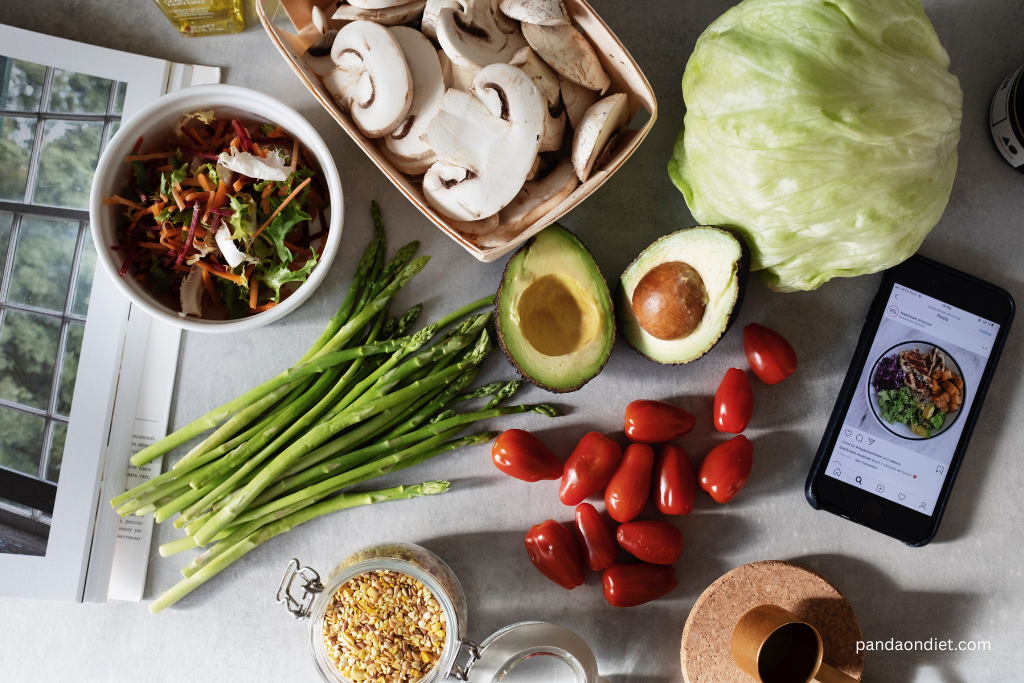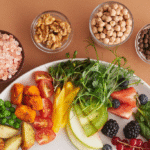Eating healthy doesn’t need to drain your wallet. Many superfoods are affordable, easy to find, and simple to use in your daily meals. Add these foods to your kitchen. And get vitamins, minerals, and antioxidants without spending much. Let’s start with five budget-friendly superfoods you can count on.
- Oats
Oats are one of the most cost-effective superfoods you can buy. A single bag stretches into weeks of breakfasts, snacks, and even baked goods. Cooked oats give off a warm, nutty smell that feels comforting on busy mornings. They are rich in fiber, keep you full longer, and help with digestion.
You can make overnight oats with fruit for a quick meal. Blend them into smoothies to add thickness. Use oats in homemade granola for a healthy crunch. Their mild flavor works well in both sweet and savory dishes. For a cheap snack, mix oats with peanut butter, honey, and seeds to make energy bites. They also support healthy digestion. You’ll save money while giving your body steady fuel throughout the day.
- Lentils
Lentils prove that plant-based protein doesn’t have to be pricey. A cup of dried lentils expands into a hearty, filling dish that can feed your family with ease. Lentils cook faster than most legumes. You can have a healthy meal ready in less than 30 minutes. You can even cook a large batch and freeze portions for future meals. This makes lentils not only affordable but also incredibly practical for everyday cooking.
- Sweet Potatoes
Sweet potatoes offer more than just their natural sweetness. They’re loaded with beta-carotene, a nutrient your body needs. It converts into vitamin A to support healthy skin and vision. Despite their impressive nutrition, sweet potatoes are inexpensive and widely available year-round.
Bake them until the skin crisps and the inside turns soft and creamy. Mash them with cinnamon for a warm side dish or roast cubes with olive oil for a caramelized crunch. You can even slice them into thin rounds, season them, and bake for a healthier version of chips. Sweet potatoes store well in a cool, dark space, which means you can stock up without worrying about waste by swapping them into meals in place of white potatoes. You’ll stretch your budget while bringing more flavor and nutrients to your plate.
- Cabbage
Cabbage is one of the cheapest vegetables you can buy. It’s full of vitamins C and K, plus antioxidants. Unlike most leafy greens, it stays fresh longer, making it a smart choice if you want to cut down on food waste.
Slice it thin for a crunchy slaw, sauté it with garlic for a quick side, or simmer it in soups and stir-fries. Its mild flavor takes on the taste of whatever seasoning you pair it with, from soy sauce to vinegar. You can even ferment it into sauerkraut for gut health at a fraction of the cost of store-bought jars. One head of cabbage goes a long way, stretching into several meals. That’s why this humble vegetable deserves a steady spot in your grocery basket.
- Eggs
Few foods deliver as much nutrition for the price as eggs. Each egg packs high-quality protein along with vitamins B12, D, and choline, which support brain health. They’re also one of the most versatile ingredients in the kitchen.
Boil a batch and keep them ready for quick snacks or lunch boxes. Whisk them into omelets with leftover veggies for a fast, nourishing dinner. Crack them over rice or noodles to instantly boost a simple meal. Their rich, savory aroma as they cook is enough to make any dish more comforting. Since eggs are often available in bulk, they’re a practical option when you’re feeding a family on a budget, by making them a regular part of your meals. You’ll stretch your food dollars while keeping nutrition levels high.
- Bananas
Bananas are one of the cheapest fruits you can buy. Their natural sweetness makes them a family favorite. They are full of potassium, which supports healthy blood pressure. They also give you quick energy when you need a snack.
Eat one for breakfast, blend it into a smoothie, or add slices to oatmeal. Overripe bananas don’t need to go to waste. Mash them into pancake batter or muffins. You can also freeze them and make creamy homemade ice cream. Their soft texture and sweet aroma make them appealing to both kids and adults. Bananas are cheap and available all year, making it easy to eat more fruit.
- Chickpeas
Chickpeas, also known as garbanzo beans, are both affordable and versatile. You can buy them dried in bulk or grab canned versions for convenience. They’re packed with plant-based protein, fiber, and essential minerals. Make them a true superfood for everyday meals.
Roast chickpeas with spices until they turn crunchy. They make a healthy snack that can replace chips. Mash them with garlic and lemon to make hummus. Toss them into salads, soups, or curries for extra protein. Their mild, nutty taste works well with many seasonings. Cook a big pot of dried chickpeas, and you’ll have a base for several meals. They help you cut meat costs while keeping your diet rich in nutrients. Chickpeas are a pantry staple that always brings flavor and value.
- Carrots
Carrots bring crunch and sweetness to meals without costing much. They’re full of beta-carotene, fiber, and antioxidants. That supports your eyes and immune system. Carrots also stay fresh in the fridge, making them a dependable choice.
Eat them raw with dip, shred them into salads, or roast with olive oil until caramelized. Their sweetness deepens in soups and stews, adding rich flavor. Extra carrots? Blend them into smoothies or bake them into muffins for a healthy boost. Carrots are affordable, versatile, and full of nutrients. It proves you don’t need expensive produce to eat well.
- Brown Rice
Brown rice is one of the cheapest staples you can buy in bulk. Unlike white rice, it keeps its bran layer. That means more fiber, vitamins, and minerals in every bite. It has a nutty taste and a chewy texture that make meals more filling.
Use it as a base for grain bowls, stir-fries, or soups. Pair it with beans or lentils for a protein-rich meal that costs only pennies. Cook a big pot at the start of the week for quick lunches or dinners. It reheats well so that you can mix it with vegetables, eggs, or sauces for variety. Brown rice saves money while giving you a healthy base for countless recipes.
- Apples
Apples are a budget-friendly fruit. You can often buy them in bulk, and they last for weeks if stored well. They are crisp, juicy, and naturally sweet. Apples give you fiber and vitamin C, making them a healthy snack.
Eat them with peanut butter for extra protein. Add slices to salads for crunch. Bake them with cinnamon for a warm, cozy treat. Apples are easy to pack in lunchboxes or carry to work. They last longer than softer fruits, so you waste less. With many varieties to choose from, you get different flavors without spending more. Apples are affordable, tasty, and worth keeping in every kitchen.
Final Words
Eating healthy doesn’t need to be expensive. Budget-friendly superfoods like oats, lentils, sweet potatoes, cabbage, and eggs. It helps you save money while eating well. These foods are easy to store, simple to use, and full of nutrients that keep you strong and energized.
FAQs
What are some cheap nutritious foods for the homeless?
Cheap nutritious food for the homeless often includes bananas, oats, rice, lentils, and canned beans. These foods are filling, easy to store, and packed with energy and protein.
What counts as cheap, healthy food on the go?
Cheap, healthy food on the go includes boiled eggs, apples, bananas, roasted chickpeas, and carrot sticks. They’re portable, require little prep, and keep you energized throughout the day.
Which cheap, healthy foods are good for weight loss?
Cheap, healthy food for weight loss includes oats, cabbage, lentils, and brown rice. These foods are high in fiber and protein, helping you stay full while cutting calories.
What is cheap food to buy when broke?
Cheap food to buy when broke includes rice, beans, eggs, oats, and potatoes. These staples can be cooked in many ways, last a long time, and cost very little.
How can I eat cheap and healthy for a week?
To eat cheap and healthy for a week, plan meals around bulk foods like rice, oats, lentils, and eggs. Add seasonal vegetables and fruits like carrots, cabbage, and bananas. Cooking at home saves even more.
What are the top 10 cheapest foods in the world?
The top 10 cheapest foods in the world include rice, oats, lentils, beans, potatoes, bananas, cabbage, eggs, carrots, and apples. All are budget-friendly, widely available, and full of nutrients.
How do superfoods help save money?
Superfoods like lentils, oats, and cabbage are inexpensive, filling, and versatile. They stretch into multiple meals and reduce the need for costly processed foods.


